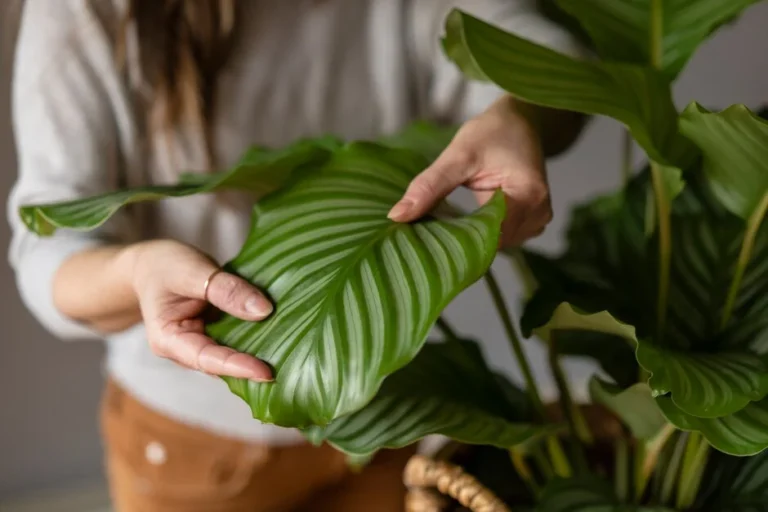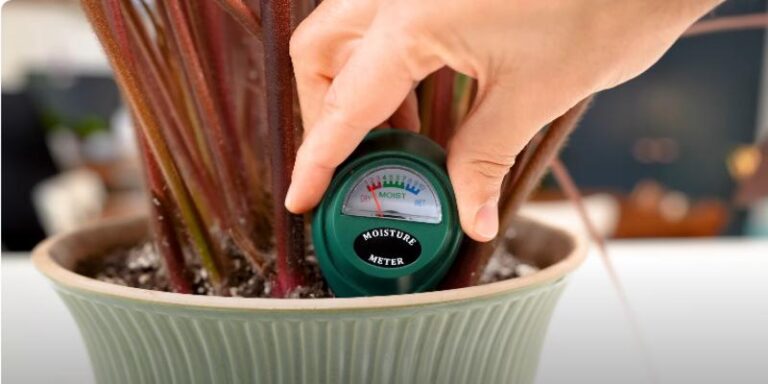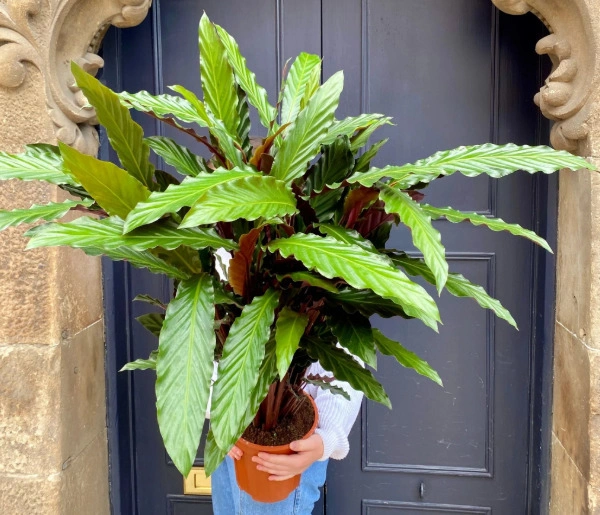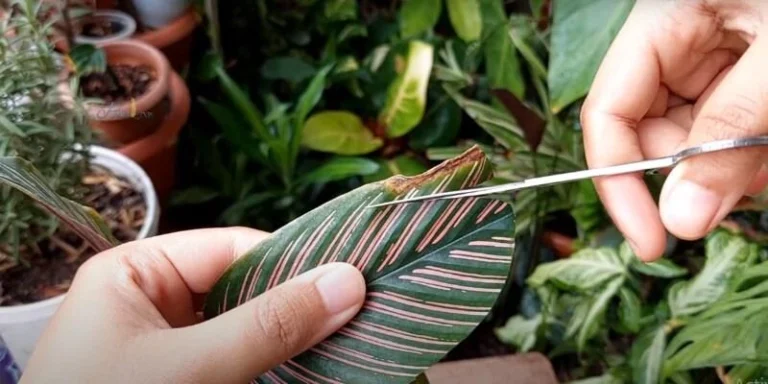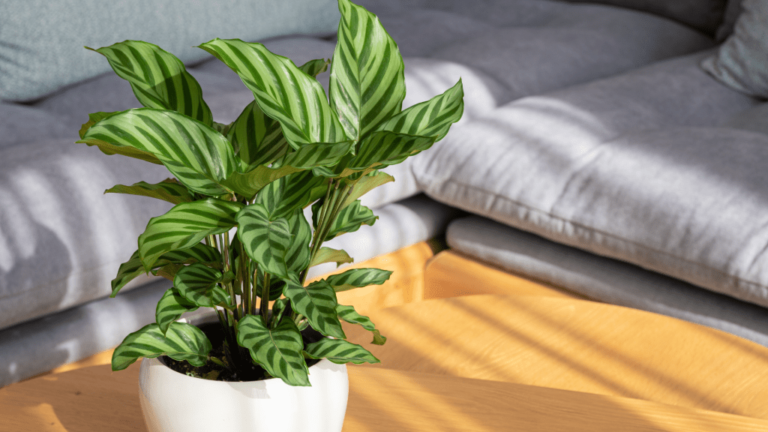Is Calathea Toxic to Cats and Dogs?
Calathea, also known as the Prayer Plant, is a common houseplant famous for its stunning foliage. Many pet owners looking to feather their nests with these exotic-looking plants often worry about whether to introduce them into their homes because our pets love to chew on plant leaves. Therefore, they ask, “Is Calathea toxic to cats and dogs or any pets?”
The answer is simple: Calathea plant is neither toxic for pets, including cats and dogs, nor for humans. These plants don’t contain any toxic chemicals that are detrimental to pets. That’s why Calatheas are pet-friendly.
Keep reading our comprehensive guide to find out if your pets can safely coexist with Calatheas and get answers to all your questions.
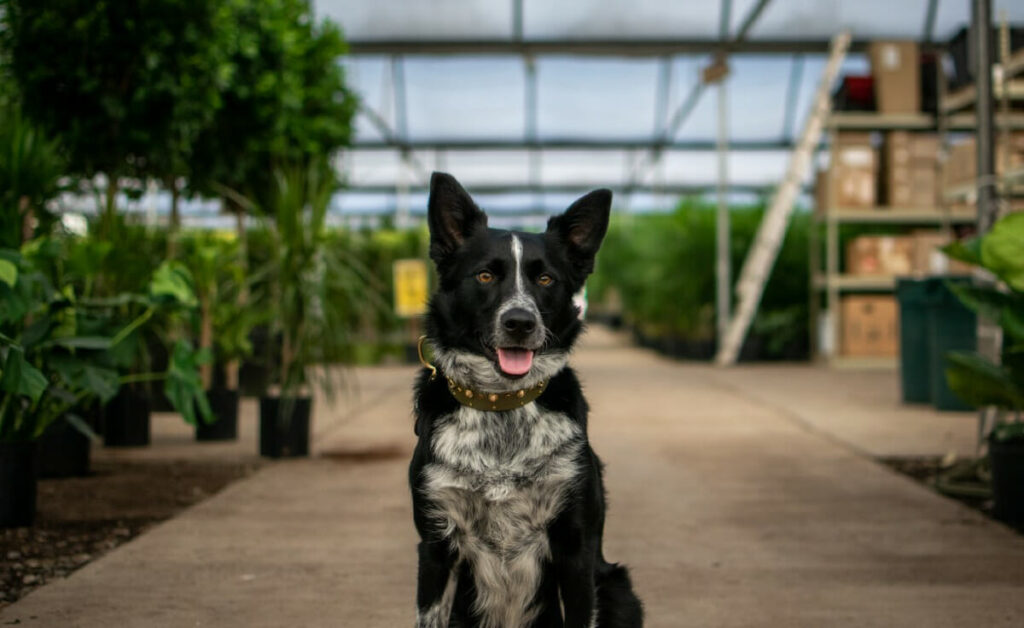
What is the Calathea Plant?
Calathea is a unique potted plant from the tropical regions of South America. It belongs to the Marantaceae family and is a flowering genus. Its large multicolored leaves are green with hints of white, pink, red, or orange and have a vibrant purple underside. They fold up at night and unfurl in the morning, resembling hands in prayer. That’s why they are also known as the Prayer plant.
Calathea produces white, yellow, or purple flowers in the wild, but they rarely flower when grown indoors.
Most Calathea varieties grow well in humid environments and USDA zones 10-12. There are over 60 distinct Calathea varieties. Calathea Concinna “Freddi,” Calathea Orbifolia, and Calathea Rattlesnake are famous indoor options.
Calathea plants are easy to care for. To thrive, they require bright, indirect light, high humidity, warm temperatures, regular watering every 1-2 weeks during the growing season, and well-draining potting mix.
Pet owners, however, worry about bringing Calathea plants home due to their pet safety concerns. So, let’s find out whether Calathea is toxic to pets or it’s a myth about this stunning houseplant.
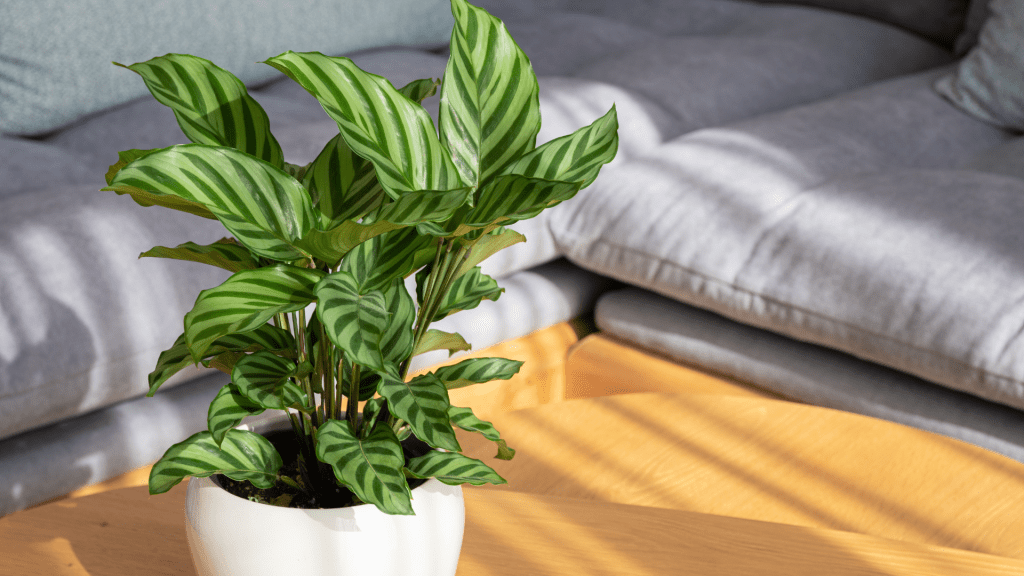
Also check What is Calathea Plant?
Is Calathea Pet-Friendly or Non-Toxic to Cats and Dogs?
Calatheas Toxicity for Cats:
Calathea is non-toxic to cats, making it a safe houseplant for pets. The ASPCA’s (American Society for the Prevention of Cruelty to Animals) report declares it a pet-safe plant because it doesn’t contain toxins like Calcium oxalate that could harm your felines. The plants have an upright growth habit, which produces a sturdy structure that may deter your curious cats from chewing leaves and nibbling on or damaging them.
However, giving your cats a free pass to consume a large amount of Calathea leaves is also detrimental. Its thick and fibrous leaves are hard to digest and can cause gastrointestinal issues for your kittens.
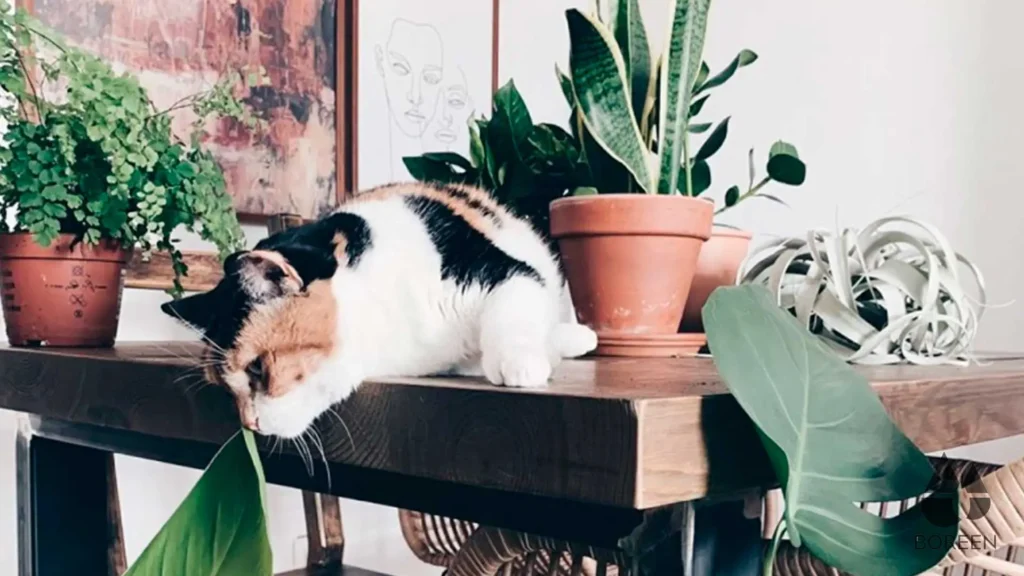
Toxicity for Dogs:
Like cats, nothing about Calathea houseplants will entice a dog, but if your canine is curious, know that Calatheas are not poisonous to dogs. Your furry friend will not be harmed if they eat or chew any part of the plant, like leaves, stems, or flowers. The worst thing that will happen if your dog eats this plant is that the plant will be damaged.
However, ingesting a large amount of Calathea leaves can cause gastrointestinal discomfort due to their thickness and fibrous texture. Other possible problems your puppy may face include vomiting, diarrhea, loss of appetite, and stomach acne.
If you notice such symptoms in your canine pet after nibbling on Calathea, always seek advice from a professional vet.
Though Prayer houseplants are pet-friendly, keeping them out of your pet’s reach is best to ensure your plant doesn’t suffer damage from curious pets.
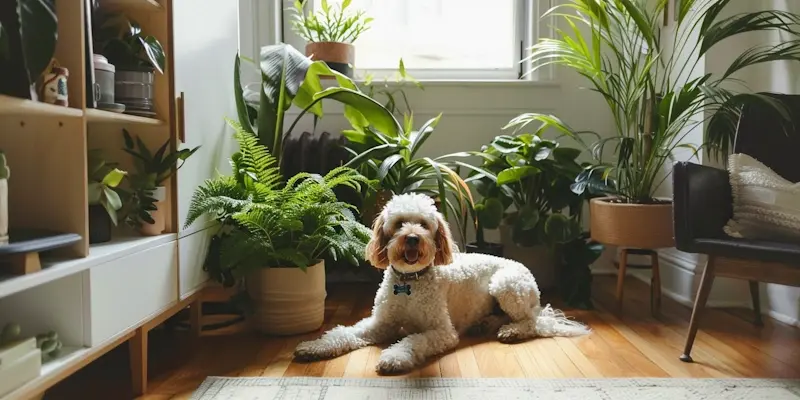
What Happens If Curious Pets Eat Calathea Leaves, Stems, or Flowers?
While Calatheas are non-toxic for pets, eating too many Calathea leaves can make an animal feel bloated or full. Your cats and dogs may show the following signs of discomfort after eating Calathea leaves:
If you notice Calathea poisoning, always check with your doctor or professional veterinarian for proper guidance.
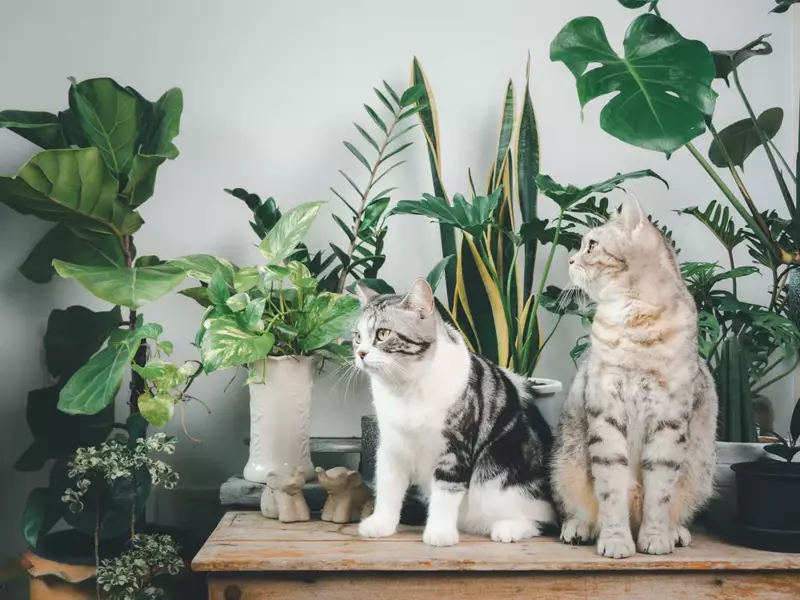
Is Calathea Houseplant Poisonous to Humans or Kids?
Like cats and dogs, Calathea is non-toxic to humans. The plant’s leaves are free from toxic chemicals like calcium oxalate crystals, which can potentially harm you or your kids.
However, it is advisable to supervise your children and keep the Calathea plant out of their reach to prevent them from ingesting any part of the plant.
Preventing Calathea Poisoning from Cats and Dogs – Tips for Pet Owners
Although Calathea plants are pet-friendly, it is still best to stop your cats and dogs from eating any parts and prevent them from Calathea poisoning.
Here is how you can stop Cats and dogs from eating houseplants:
- Keep your Calathea plant at a suitable height by keeping them in hanging baskets and planters.
- You can also place them on high shelves to prevent your pets from accessing them.
- Placing pebbles on the soil or fencing them with fine gravel can deter your cats or dogs from digging and damaging your plant’s roots and leaves.
- Cats are susceptible to citrus smell. Therefore, you can use a diluted lemon juice spray on your plant’s leaves to chase away cats. Add a few drops of this juice to the plant’s soil.
- Plant owners can also train their dogs to behave around houseplants and not get near them with positive reinforcement and treats.
- Plant catnip and pet grass to give your cats and dogs their own plants to play around on, thus leaving yours.
Following these easy tips ensures your pets and Calathea plants can live happily and healthily together.
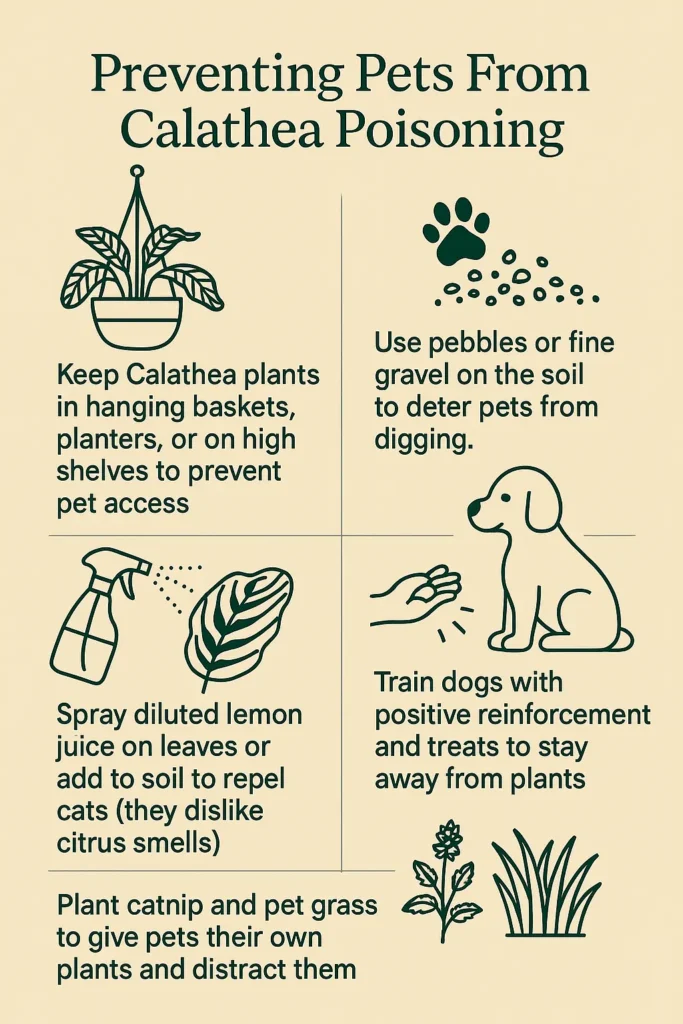
Also check How to Care for a Calathea Plant?
Frequently Asked Questions About Popular Non-Toxic Houseplants
Why is Calathea pet-friendly?
Calathea is entirely safe for pets like cats and dogs because it does not contain harmful ingredients like calcium oxalate, which is insoluble. However, consuming Calathea leaves in large quantities can cause stomach upsets.
Conclusion | Is Calathea Toxic to Cats and Dogs
In conclusion, all Calathea varieties are pet-friendly and non-toxic to cats, dogs, and humans. This non-toxic nature makes them a safe addition to pet-friendly homes.
However, don’t let your pets touch or consume any part of this plant. Place your pets away from Calatheas on high shelves, spray them with lemon juice, and fence your plants to chase them away!

About Author
Hi, I’m Emily Davis, a passionate tropical plant enthusiast dedicated to sharing knowledge and expertise with plant lovers. Through his blog, I will provide guides, tips, and tricks for caring for tropical houseplants species like Alocasia, Anthurium, Calathea, Philodendron, Begonia, and many more that will help readers bring a touch of paradise into their own homes. With a deep love for the vibrant colors and lush textures of tropical flora, I’m committed to inspiring others to cultivate their own tropical oasis.

![Types of Calathea Plants: 25 Varieties to Grow Indoors [with images] 8 Calathea](https://tropicalplantscare.com/wp-content/uploads/2025/04/Calathea-2-768x576.webp)
